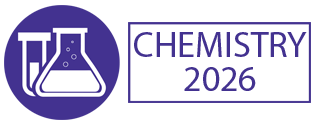Microscience Microscopy
Microscience microscopy refers to the study and visualization of microscopic objects and structures using advanced microscopy techniques. It encompasses a wide range of microscopy methods that enable researchers to observe and analyze samples at the micro and nano scales with high resolution and magnification. Techniques include optical microscopy, electron microscopy, scanning probe microscopy, and super-resolution microscopy, each offering unique advantages in terms of resolution, contrast, and sample preparation requirements. Microscience microscopy is utilized in various scientific disciplines such as biology, materials science, nanotechnology, and medicine for research, diagnostics, and quality control. It allows for the visualization of biological specimens, cells, tissues, nanoparticles, and nanomaterials with unprecedented detail, providing insights into their structure, composition, and behavior. Advances in microscopy technology, including improved resolution, faster imaging speeds, and multimodal imaging capabilities, drive innovation in microscience microscopy. Collaboration between scientists, engineers, and microscopy manufacturers facilitates the development of new microscopy techniques and instruments to address emerging challenges and research needs. Continuous research and development in microscience microscopy contribute to advancements in scientific knowledge, technological innovation, and medical diagnostics, ultimately improving our understanding of the natural world and enhancing human health and well-being.

Hossam A Gabbar
Ontario Tech University, Canada
Victor John Law
University College Dublin, Ireland
Alexander Bagaturyants
National Research Nuclear University MEPhI, Russian Federation
Sergey Suchkov
N.D. Zelinskii Institute for Organic Chemistry of the Russian Academy of Sciences, Russian Federation
Shree Niwas Chaturvedi
Centre for Aptitude Analysis and Talent Search, India
Pieter Samyn
SIRRIS, Belgium




Title : Advances in plasma-based radioactive waste treatment
Hossam A Gabbar, Ontario Tech University, Canada
Title : Unraveling the ultrastructure and functions of the neuronal membrane skeleton using super-resolution fluorescence microscopy
Zhou Ruobo, Djillali Liabes University of Sidi Bel Abbes, Algeria
Title : Solar box cooker dehydration, and relative humidity endpoint detection, of lamiaceae culinary leaves on the island of Crete
Victor John Law, University College Dublin, Ireland
Title : Nutrient and heavy metal loads from the Ribeiras to Coastal zones: A land-ocean continuum perspective in Madeira Island
Aracelis Del Carmen Narayan Rajnauth, University of Porto, Portugal
Title : Prospective polyoxometalate-based covalent organic framework heterogeneous catalysts
Arash Ebrahimi, Comenius University Bratislava, Slovenia
Title : Eliminating implant failure in humans with nano chemistry: 30,000 cases and counting
Thomas J Webster, Brown University, United States